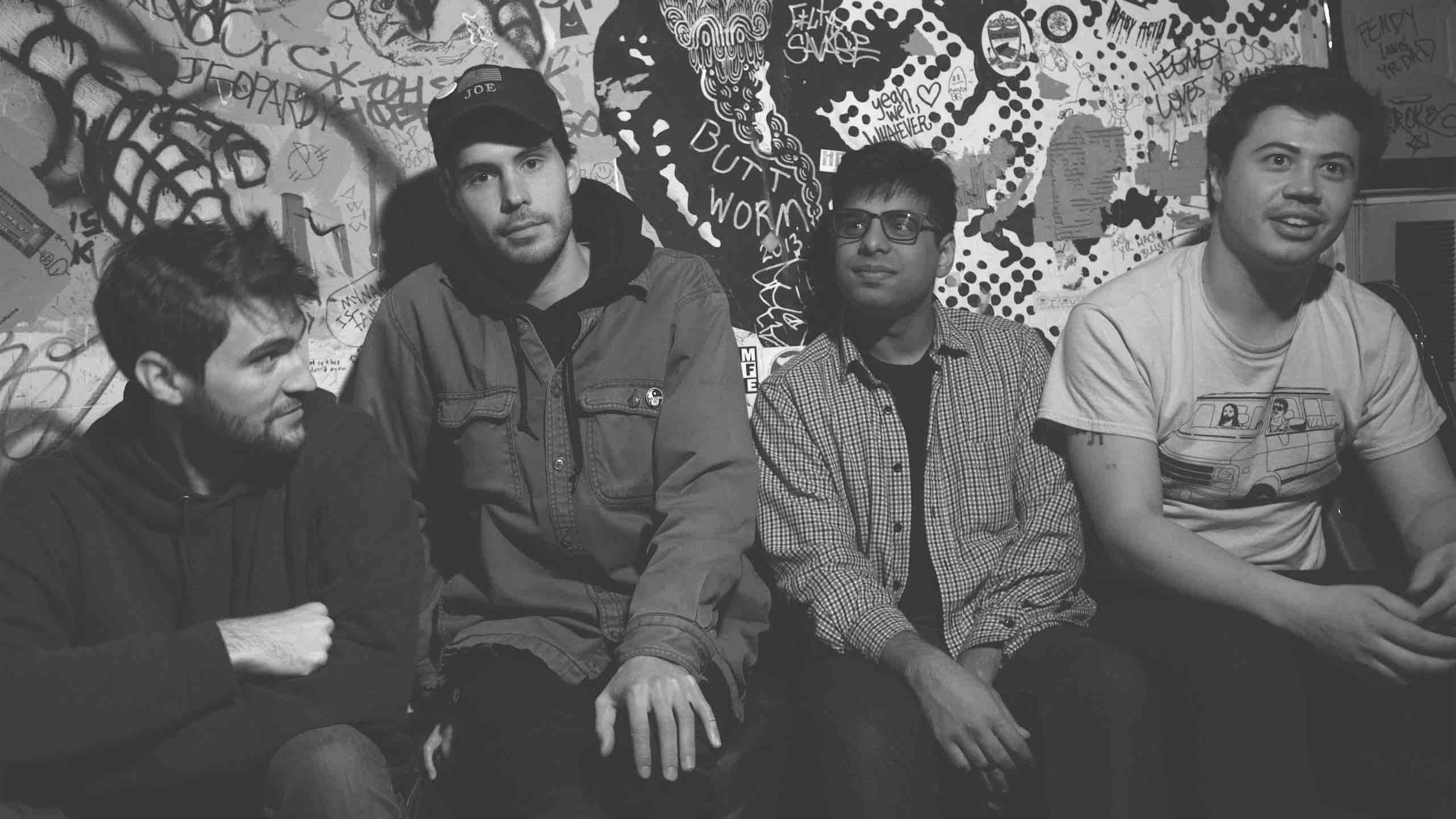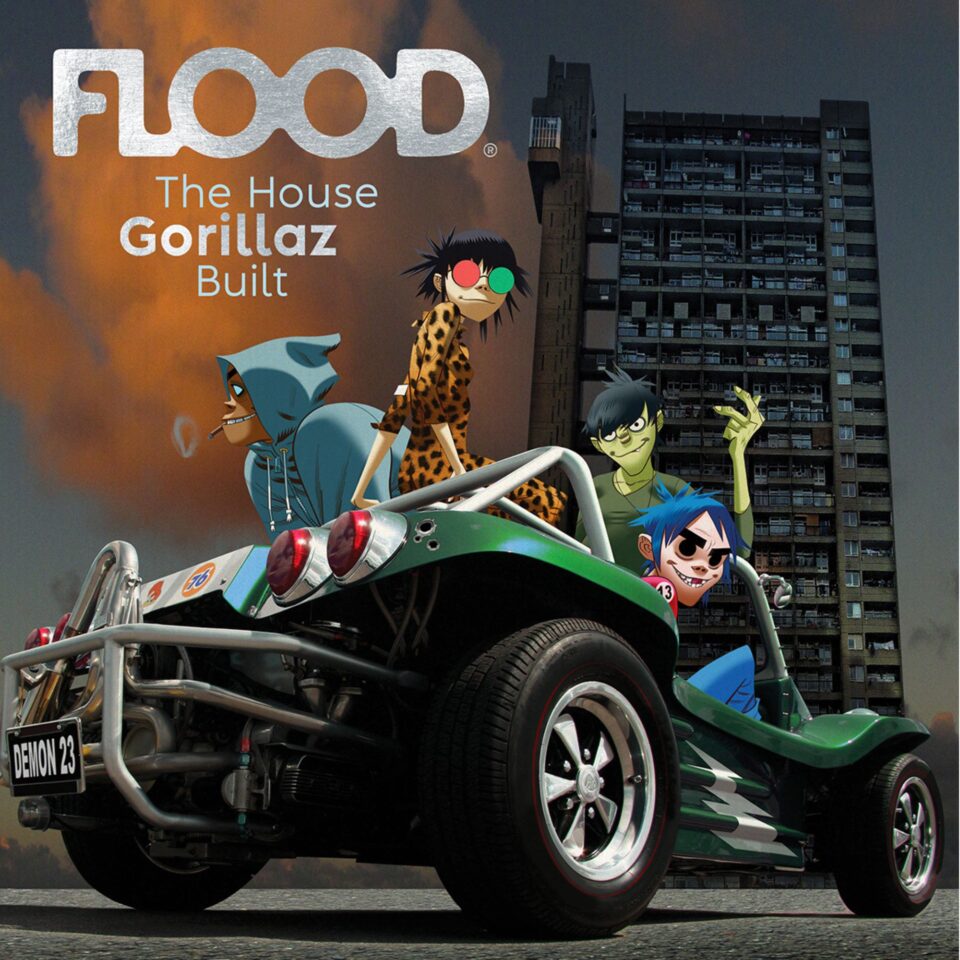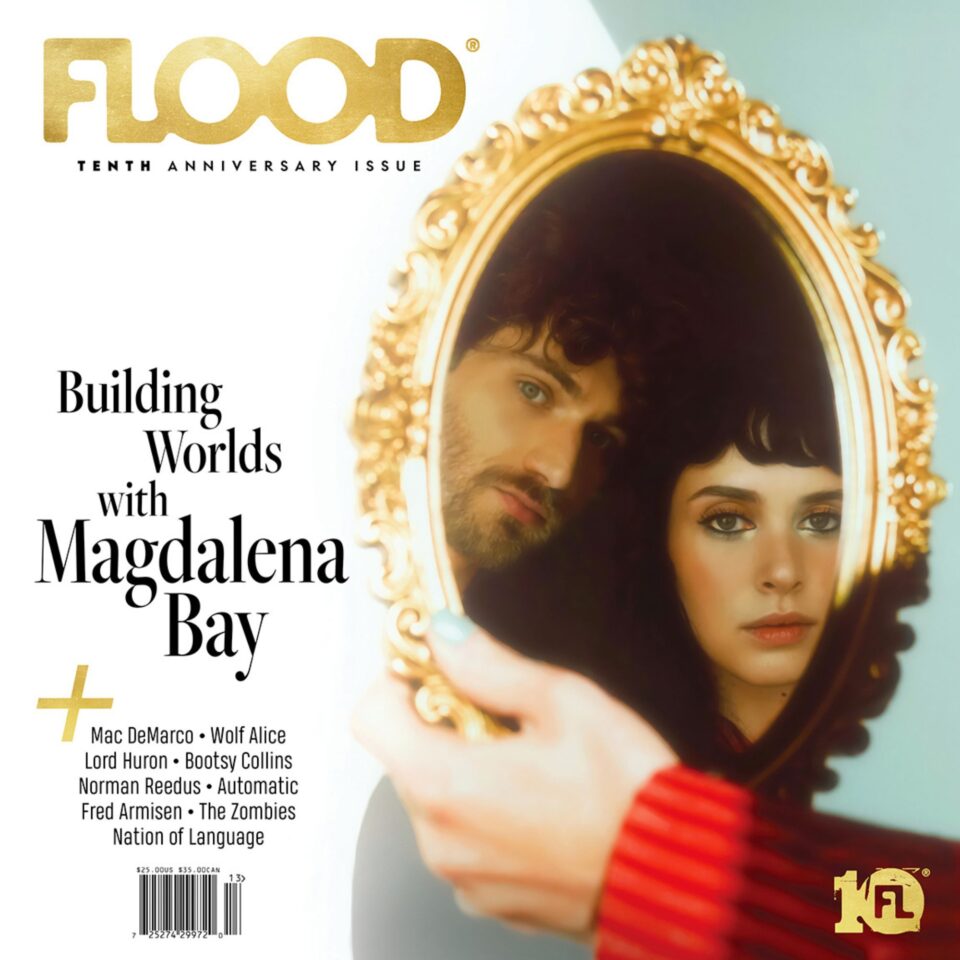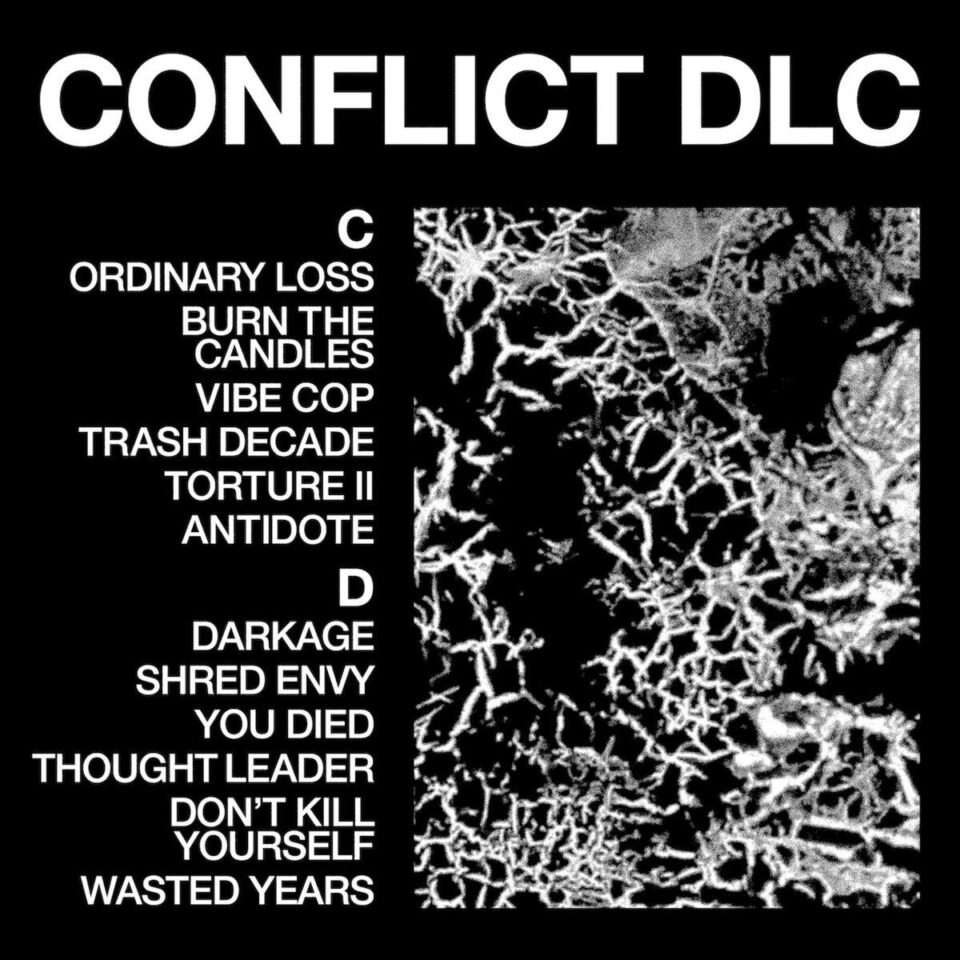Big Ups was a noise-rock band from Brooklyn whose nine-year existence almost perfectly spanned the entirety of the 2010s. Which also means that their lifespan directly correlated with the borough’s all-too-short DIY period defined by venues/community spaces like Death by Audio, Shea Stadium, and Silent Barn, which seemingly cropped up in response to the prior decade of indie artists leveling up to mainstream acclaim, leaving literal independent artists no choice but to build their own ecosystems in their wake. Of course, following the tragic Ghost Ship fire in Oakland at the end of 2016, that ecosystem slowly dissipated as these venues were shut down one by one, with a new era of more online-based collaboration to follow, aided by the imminent period of COVID that prevented in-person community anyway.
Yet if you listen to Big Ups’ debut album Eighteen Hours of Static, it feels pretty distantly removed from Speedy Ortiz or Porches or most of the other acts circulating this scene during this era—instead it recalls the aggressive noise rock coming out of Toronto at the time (well, perpetually, really), care of bands like KEN Mode or METZ. In the words of vocalist Joe Galarraga, they were “too ‘rock’ for the indie rockers and too ‘indie’ for the punks.”
With that debut record turning 10 at the beginning of the year, the quartet—rounded out by guitarist Amar Lal, bassist Carlos Salguero, Jr., and drummer Brendan Finn—are celebrating the milestone with a new reissue of the album, which includes a remix collection featuring tunes reworked by Sad13 and Maneka (currently and formerly of Speedy Ortiz, respectively), This Is Lorelei, Bethlehem Steel’s Rebecca Ryskalczyk, Lost Boy ?, and more staples of the mid-’10s scene. Like everything else these days, the project was born after nostalgia for the era was dredged up within the band at the height of COVID, with the decade milestone seeming like an apt enough reason to revisit the band’s legacy.
Before the project drops this Friday via Dead Labour, Big Ups is sharing a 13-minute mini-doc compiling footage and demo recordings of their time together. Rather than a maudlin narrative soundtracked by that Green Day song about having the time of your life, though, it’s a more honest, vérité approach to tour, recording, and everything in between—in short, the small moments that likely mean the most to these four musicians. “I wanted my son to someday have a bit of a more personal look into the time I spent with Amar, Carlos, Joe, and our tour manager, Tom, and for him to maybe understand what that meant to me and hopefully share some of that sentiment—which is what my end goal really was for this project,” shares Finn.
Check out an exclusive look at the doc below, and read on for a Q&A with all four band members about looking back on the Big Ups era without fully transforming into a pillar of salt.
What did you feel upon revisiting Eighteen Hours of Static for this project? Does it feel firmly planted in the mid-’10s, or does it still feel current/timeless to you?
Joe Galarraga: Lyrically, some of it feels so unrelatable, but I guess that comes with the territory—writing a bunch of angry songs in your early twenties. In that way, the record definitely feels like a time capsule. At the same time, there are other pieces that I’m kind of surprised at how resonant they are. “Wool” in particular still feels really poignant. It’s about avoidance—dealing with pain, having difficult conversations with people. The moments that are a bit more personal in that way, looking a bit more inward, those feel like something I can still hang my hat on.
Amar Lal: Similarly, revisiting some of the music feels surprising, and trying to access that style of playing after a decade feels more like learning someone else’s guitar parts than re-learning some of my own. The most potent thing has been revisiting the record publicly, and getting to see and understand the connection that the music made with other people and still holds for them. For us, this record was a launching point to tour, but I think we all look toward our final record as what we’re most proud of, so it’s been interesting to add that new dimension of understanding what the record meant to other people.
Carlos Salguero Jr.: There were a lot of bands in the 2010s in Brooklyn—every day, a new and special band. Even so, I don’t remember anyone sounding like us or doing what we were doing. This had positives and negatives. We were lucky to have a great positive reaction to being a loud and bombastic band of young twentysomethings who looked like they would also remember to clear the plates at your mom’s house when invited over for dinner. I feel like we were lucky to ride a reactionary wave when indie rock and reverb was the dominant paradigm. But employing a very specific sound that could only come from the four us certainly alienated us in some ways from further entering mainstream. But this, actually, was good for us (or at least for me). I realize this now, and I appreciate it even more. What we made is singular and ours alone. And if you like it, it’s because you actually like it, not because it’s on a playlist of bands from the 2010s. But that’s hard to appreciate contemporaneously. I’m old now, though. I’m lucky to have been in this band. I’m listening to “Justice” as I write this and, man, Joe’s lyrics are timeless.
Did revisiting the footage in the documentary make you itch to get back on the road/in the studio together again? Or did it serve as a reminder of the frustrations of touring/recording on a tight budget?
Brendan Finn: Revisiting the footage in the documentary really didn’t start with any intent, but was more of a way for me, personally, to revisit a lot of the aspects of Big Ups that had less to do with performing and more with all of us being together. I started combing through footage when COVID began and I had already been struggling with missing the elements of Big Ups that felt most important, like the friendship we all shared and continue to share.
So much has changed during the process of putting together these clips that the purpose of it all started to take a new shape, as well. I wanted my son to someday have a bit of a more personal look into the time I spent with Amar, Carlos, Joe, and our tour manager, Tom, and for him to maybe understand what that meant to me and hopefully share some of that sentiment—which is what my end goal really was for this project. When we decided to talk about the reissue and playing again, this seemed like it could help our audience connect a bit more to who we were and still are in a lot of ways. I can’t say for sure how everyone else feels about the documentary, but it was always made from a place of love for this band.
Carlos: It made me want to restart watching Lost on my laptop in the back of a Mercedes Sprinter, for sure.
Are there any current bands you hear Big Ups’ influence in? Where do you see that post-hardcore/noise rock sound you mined on Static fitting into the current music scene?
Joe: Truthfully, I don’t feel like I hear that sound in a lot of current bands. I think back when it came out this record was too “rock” for the indie rockers and too “indie” for the punks—and I feel like that still rings true today. I remember hearing some comment that the songs on this record sounded like they belonged on the Tony Hawk Pro Skater soundtrack—which was definitely intended as a diss. Like, too palatable. Looking back I think that’s pretty funny and accurate. I think we were at a weird place in our development when we recorded this. We were still finding our sound a bit. Nothing else we released sounds quite like Eighteen Hours of Static.
Anyways, getting back to today—it feels like the chasm between noise rock, hardcore, metal, etc., and indie rock has widened, and bands are either firmly in the former camp or the latter. The scenes are totally separate. An exception might be a band like Chat Pile that everyone seems to love. Finally, I also think the influences we “mined” for this record are a little out of fashion these days: shoegaze and hardcore are in, noise rock and post-hardcore are out!
Amar: Anyone at the music licensing department at Activision, please email us!
Carlos: I can’t opine on this, mostly because my discovery of new music comes from YouTube which has me Benjamin-Buttoning from 1983 backwards. Bless the comments nerds on YouTube.
What do you think current DIY bands might be missing out on with the closure of spaces like Shea Stadium and Death by Audio? Are you optimistic about remote collaboration/community?
Joe: This is actually a really hard question for me to answer, because Big Ups is so inextricable from those places—Death by Audio, Shea Stadium, Silent Barn, and the like. The band wouldn’t exist without those places for numerous reasons, but mainly because that was in many ways the “goal” of the band. Those DIY spaces informed the ethos and aesthetic of the band so much. We as a band are forever indebted to those places—and I personally am, too. I’ve said this before, but when we first started, all I wanted for the band was to play a show at Death by Audio. I still remember our first show there: first of four on a bill with PC Worship. To this day that’s still so cool to me. Maybe our pinnacle. And then we became so close with everyone at Shea. I felt like I lived there for a few years.
Anyways, I can’t imagine the band without those places. It’s literally impossible. But to your second question about optimism around remote collaboration and community: Communities like these have existed for a long time. I think of places like Tumblr or something where people found like-minded people online and worked on creative projects together. People found others who “get” them. I’m all for it! Anything that makes people feel less isolated, misunderstood, or alone in this world is a net positive—even if I myself don’t connect with people in those ways.
Amar: There’s a piece in David Byrne’s book where he talks about how music is made for certain contexts—orchestral music for giant halls, punk rock and danceable music for the clubs and dive bars like CBGB’s. So much of the music we made was shaped by what it felt like to perform it in spaces like Death by Audio and Shea Stadium—would it get a crowd to move or engage, could we draw them in with dynamic shifts or the way we performed? Like Joe is saying, these spaces were aspirational for us to perform in, and it felt important to create something that could stand up both musically when playing between bands pushing the limits like Palm, and as a performance when playing with bands like The So So Glos who got the room moving in such a specific way.
Those spaces also felt like clubhouses, where you’d always run into someone you knew, and be able to talk about and be inspired by music in a way that made you want to go home and make things. Many of the people I met in those spaces at that time are still so important to me. The repurposed post-industrial space-as-venue era may be dead or dormant after Ghost Ship, but new spaces and new ways for people to connect around art and music IRL outside of bars will surely foster new kinds of art. I look at things like the way Feels Like Floating and Living Earth in LA have found ways to activate public space and parks—or the Renegade Rave scene in Oakland—as positive sparks of something new.
Carlos: I have no doubt the next generation will find a way. Those spaces were special to us, unique for us, and an essential pollinator of the scene. While I’m sad they’re gone, their demise is part of the design of the system we live under here. It’s that knowledge that the developer is coming—not now, but someday—that makes those times special. But something else will find its way. I just hope I’m still cool enough to find out about it when it does.
Do you ever think about what Big Ups might sound like today if you’d stayed together?
Brendan: I think we always wanted to be honest with our music in the sense that we enjoyed trying new ideas and exploring new directions musically when we were performing and writing regularly. That being said, it’s hard to say how we might have sounded had we stayed together, and honestly it rarely crosses my mind. What I know for sure is that musically we always were able to gel in ways that felt truly unique and motivational.
Carlos: Much, much more cor anglais.







